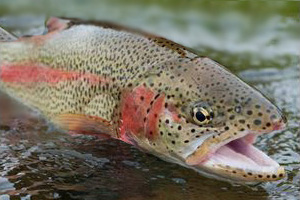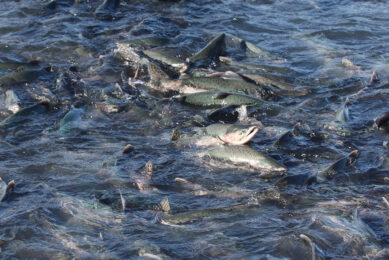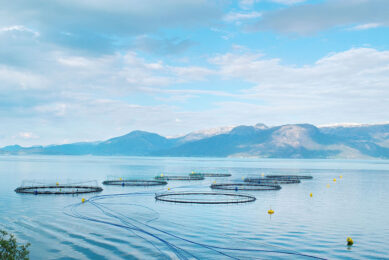Study: Use of DDGS in rainbow trout feeds

A group of American researchers have published a report on the use of distiller’s dried grains with Solubles (DDGS) in rainbow trout feeds. The concentration of dietary DDGS that rainbow trout can tolerate varies according to the literature, which indicates that cereal grain source, EAA supplementation, addition of phytase and diet composition can all play a vital role
Increasing price and reduced availability of fish meal have prompted feed manufacturers and aquaculture producers to search for sustainable and economical alternative protein sources. The majority of these have come from plants, and many, for example soybean meal, have been successfully incorporated into diets of rainbow trout and other fish species.
Distiller’s dried grains with solubles (DDGS) is a co-product of the grain-based fuel ethanol industry. Distiller’s dried grains with solubles is moderately high in protein (typically around 300 g/kg or higher, depending on the source) and is readily available and competitively priced relative to other alternative protein sources. As with other plant protein sources, there are limits to the use of DDGS in fish feeds. Distiller’s dried grains with solubles is deficient or near-deficient in some essential amino acids (EAA), but these deficiencies can be overcome through addition of synthetic EAA.
Distiller’s dried grains with solubles is also low in phosphorus (P) and about half is present as phytate phosphorous (phytate-P), which has limited bioavailability to trout. This is a concern for commercial hatcheries, because dietary P that cannot be utilised by trout is excreted, which can lead to eutrophication of receiving waters. Phosphorous utilisation by trout fed DDGS-based diets can be improved by dietary application of phytase. In addition, high levels of indigestible structural fibre limit the incorporation of DDGS in diets of rainbow trout to approximately 100-200 g/kg.
Fractionation of DDGS can reduce indigestible fibre and increase the relative protein concentration to produce a higher value product. Digestibility of these high protein fractionates is improved in trout, and higher dietary levels (up to 300 g/kg) are tolerated. The quality and nutritional composition can also vary considerably between and within DDGS grain sources and between processing plants, which further complicates incorporation of DDGS into trout diets. Production of high-value, high protein products through fractionation or other means may be needed to improve the nutritional value and consistency of DDGS for use in diets of rainbow trout.
The full study can be found here.
Source: Science Direct
Join 26,000+ subscribers
Subscribe to our newsletter to stay updated about all the need-to-know content in the feed sector, three times a week. Beheer
Beheer









 WP Admin
WP Admin  Bewerk bericht
Bewerk bericht